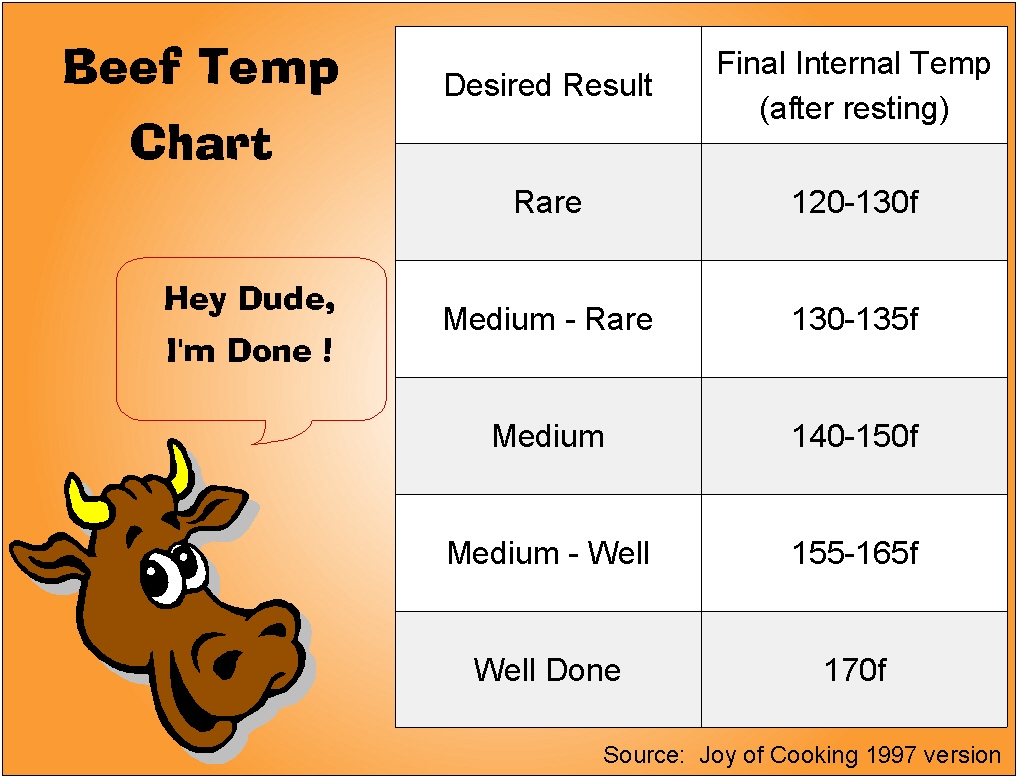Unlocking the Secrets of Perfect Roast Beef

Ever gazed longingly at a succulent roast beef, its crust a deep, inviting brown, the interior a perfect pink? Achieving this culinary masterpiece hinges on one crucial question: how long do you cook roast beef? The answer, while seemingly simple, is a nuanced blend of science, tradition, and a touch of culinary intuition.
Determining the ideal roast beef cooking duration isn't a one-size-fits-all equation. It's a delicate dance between the size of your roast, your desired doneness, and your chosen cooking method. From the fiery sear of a high-heat oven to the gentle embrace of a slow cooker, each technique demands a different approach to time management.
Historically, roasting meat was a celebratory affair, often reserved for special occasions and feasts. Large cuts of beef were spit-roasted over open fires, a time-consuming process that relied on experience and careful observation. Today, we have the luxury of modern ovens and thermometers, allowing us greater precision and control over the cooking process. Yet, understanding the fundamental principles of heat transfer and meat cookery remains essential for achieving roast beef nirvana.
One of the primary challenges in determining roast beef cooking time is the variability in roast sizes and shapes. A compact, boneless roast will cook much faster than a large, bone-in rib roast. Additionally, the desired doneness plays a pivotal role. Do you crave a rare roast, its center a vibrant crimson? Or do you prefer a well-done roast, cooked throughout to a uniform gray? These preferences significantly impact the required cooking time.
To demystify the art of roast beef timing, we'll delve into the various factors influencing cooking duration, exploring different cooking methods, and providing practical tips and guidelines. We'll equip you with the knowledge and tools to conquer the roast beef challenge and impress your guests with a truly memorable meal.
The general rule of thumb for roasting beef is to cook it for a specific amount of time per pound, depending on the desired doneness. For example, a medium-rare roast might require 15-20 minutes per pound, while a well-done roast may need 25-30 minutes per pound. However, these are just estimates, and using a meat thermometer is crucial for accurate results.
Benefits of properly timing your roast beef:
1. Tenderness: Proper cooking time ensures the roast reaches the desired internal temperature, resulting in maximum tenderness and juiciness.
2. Flavor: A perfectly cooked roast beef develops rich, complex flavors that are both satisfying and memorable.
3. Safety: Cooking roast beef to the correct internal temperature eliminates harmful bacteria and ensures food safety.
Step-by-Step Guide for Roasting Beef:
1. Preheat oven to the desired temperature (typically 350-400°F).
2. Season the roast generously with salt, pepper, and any desired herbs or spices.
3. Sear the roast in a hot pan on all sides to develop a flavorful crust.
4. Place the roast in a roasting pan and insert a meat thermometer.
5. Roast until the internal temperature reaches the desired doneness (e.g., 130-135°F for medium-rare).
6. Remove from oven and let rest for 15-20 minutes before carving.
Advantages and Disadvantages of Different Cooking Times
| Doneness | Advantages | Disadvantages |
|---|---|---|
| Rare | Most tender and juicy | May not be appealing to everyone; higher risk of foodborne illness if not handled properly |
| Medium-Rare | Tender and juicy, with a warm pink center | Slightly less tender than rare |
| Medium | Pink center is less pronounced; palatable for most | Can be slightly less juicy than medium-rare |
| Medium-Well | Mostly cooked through, with a hint of pink | Can be dry if overcooked |
| Well-Done | Cooked throughout; no pink remaining | Often dry and tough |
FAQs:
1. How long to cook a 3-pound roast beef? Depends on desired doneness, approximately 45-90 minutes.
2. What temperature should roast beef be cooked to? Varies depending on doneness, from 120°F (rare) to 160°F (well-done).
3. How to cook roast beef in a slow cooker? Low and slow for 6-8 hours, or until tender.
4. Should I sear my roast beef before roasting? Searing creates a flavorful crust and is recommended.
5. How long should roast beef rest before carving? Resting allows the juices to redistribute, resulting in a more tender and flavorful roast. Aim for 15-20 minutes.
6. What are some good sides for roast beef? Roasted vegetables, mashed potatoes, Yorkshire pudding.
7. Can I cook roast beef from frozen? It's best to thaw the roast completely before cooking for even cooking.
8. How do I store leftover roast beef? Refrigerate in an airtight container for up to 3-4 days.
Tips and Tricks:
Use a meat thermometer for accurate doneness. Let the roast rest before carving. Don't overcrowd the pan. Add aromatics like onions, garlic, and carrots to the roasting pan.
Mastering the art of roast beef timing is a journey, not a destination. By understanding the factors influencing cooking time, utilizing a reliable meat thermometer, and experimenting with different techniques, you'll unlock the secrets to creating a perfectly cooked roast beef every time. From holiday gatherings to simple weeknight dinners, roast beef offers a timeless and satisfying centerpiece. Embrace the process, savor the aroma, and enjoy the rewards of a beautifully cooked roast beef – a culinary achievement that will impress your palate and elevate your cooking prowess. Don't be afraid to experiment, to try new seasonings and techniques, and most importantly, to enjoy the process of creating a truly memorable meal. The perfect roast beef is within your reach, waiting to be discovered.
Unlocking potential mk4 jetta 20 sohc tuning guide
The ultimate guide to scrub pants for curvy women
Navigating aarp supplemental insurance plan options













